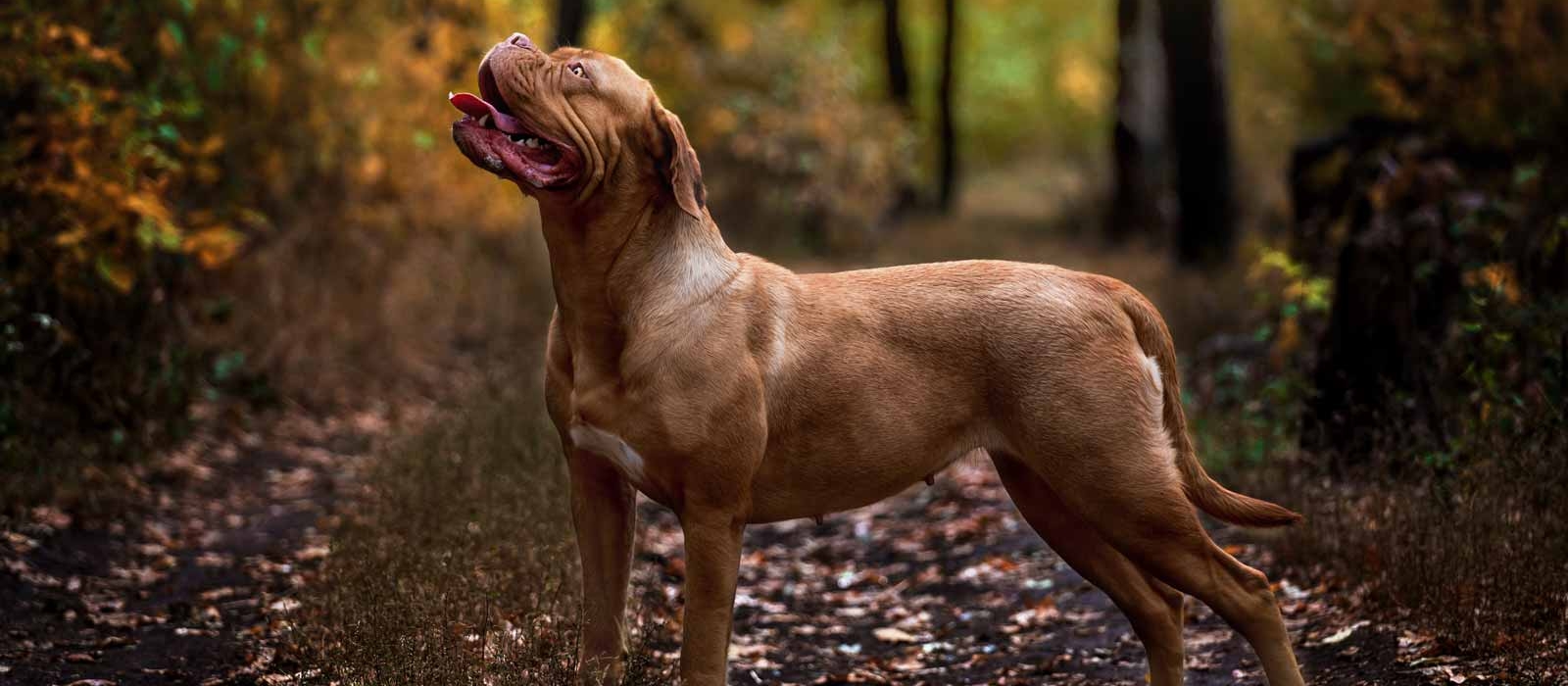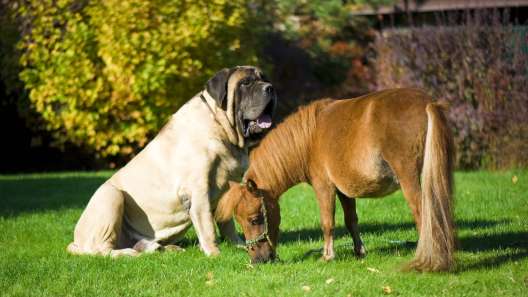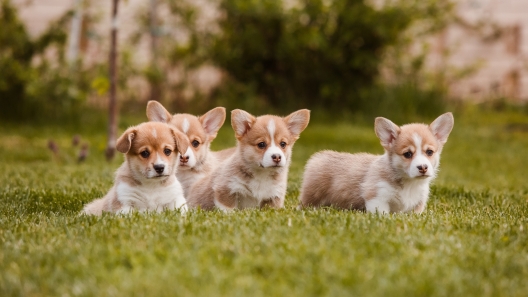-
Activity Level:
moderate
-
Shedding Level:
moderate
-
Grooming Level:
moderate
-
Trainability:
moderate
-
Good for Novice Owners:
low
-
Adaptability:
moderate
-
Kid/Pet Friendly:
often
-
Prey Drive:
high
-
Watchdog:
very alert
- Average Size: Giant
- Average Lifespan: 5-8 years
- Registered?: aca, akc
Dogue De Bordeaux/French Mastiff Dog Breed Information
Overview
Temperament
Adaptability
Health
Owner Experience
Grooming
Activity Level
Size
Life Span
Did You Know?
The Dogue de Bordeaux, also often called the French Mastiff, is an ancient dog breed. One of the facts about French Mastiffs is that their origins stretch so far back that the exact origins are mostly theory instead of fact. What is known is that they originated in the area that is now France, which was called Gaul at the time.
One theory is that this dog breed was indigenous to the area and was developed over thousands of years. Other theories are that they are descendants of another mastiff breed or are descended from the mastiff-type Roman war dogs.
The prevailing theory is that mastiff-type war dogs were brought into the area when the Romans invaded during the first century B.C. These conquering legions would have been Julius Caesar’s and brought these immense war dogs with them. Over the years, these war dogs bred with local dogs to create the “Bordeaux Mastiff” or the “Bordeaux Bulldog”.
They were originally used as fighting dogs and war dogs, similar to their ancestors. Throughout history, they instead began to be used as guardians, drafters, and hunters. During the late 1700s, the Dogue de Bordeaux guarded vast noble estates.
Although the French Revolution removed their aristocratic masters, the dog breed survived by working as a livestock guardian and drover. During this time, they were often called the “Butcher’s Dog” because of their work protecting and driving livestock.
Knowledge of the Dogue de Bordeaux was mostly contained in France, even in modern times. It wasn’t until the release of the Turner & Hooch movie in 1989 that the rest of the world discovered the breed. From there, people fell in love with the now famous dog, Hooch; the drooling, lovable, and stubborn French Mastiff that co-starred with Tom Hanks.
This dog breed has been recorded in the AKC Foundation Stock Service since 1996. The American Kennel Club fully recognized the Dogue de Bordeaux in 2008 as a member of the Working Group. Although this dog breed can still be found on farms or working as therapy or search and rescue dogs, they are more commonly found as a beloved family pet.
The Dogue de Bordeaux may be a giant dog, but they are sensitive souls with a sweet disposition. They are loyal and devoted to their families and are loving and affectionate with them. Plus, they get along fantastically with children.
They tend to have a high prey drive. Also, their protective instinct, guardian background, and territorial tendencies mean they are naturally suspicious of strange dogs and people they don’t know. As such, socialization and training early and often are important. A well-socialized and well-trained French Mastiff may still be wary of strangers, but will warm up once they’ve been introduced.
On the other hand, poorly socialized or trained dogs can react to new situations and people with aggression. Fear, poor training, and poor socialization are some of the most common causes of aggression in dogs. This is true for any dog breed and particularly so for dogs with protective and territorial instincts, which only make good socialization and training even more important.
Despite their size, the Dogue de Bordeaux is a moderately adaptable dog breed. They do well in both large homes and in apartments. As long as they get enough attention, mental stimulation, and exercise every day, they can adapt to most homes.
They do well in most climates, but are very sensitive to heat and are sensitive to extreme cold. Because they are devoted to their families, they do not like to spend long periods of time alone. Also, due to their protective and territorial instinct, they should only be let off-leash in securely fenced areas.
Potential health concerns to be aware of in the Dogue de Bordeaux can include hip dysplasia, elbow dysplasia, heart disease, epilepsy, and cancer. Good breeding practices and the health of the parents make a big difference in the health of the Dogue de Bordeaux puppies.
Reputable breeders will screen their dogs to avoid passing preventable issues like this to puppies. So, make sure you talk to the breeder about the genetic and health history of both parents. You can also ask to see any relevant health clearances or test results. The Dogue de Bordeaux Society of America recommends a cardiac exam, an elbow evaluation, a hip evaluation, and a shoulder evaluation.
As a large dog breed, the Dogue de Bordeaux is at a higher risk for bloat. Because bloat in dogs can become life-threatening if gastric torsion occurs (i.e.; if the stomach flips), it’s important to know how to reduce the risk and what the symptoms are so you know when to get help.
The Dogue de Bordeaux is generally not a good fit for a novice or first-time dog owner. They thrive on consistent rules and routines. As a sensitive breed, they do not do well with harsh corrections. You need to be proactive about building a bond with your dog and they need to trust their owner as a strong leader.
Training and discipline should be consistent and firm without being harsh. Puppy training classes are also recommended. These can help establish a training routine and also provide some opportunities to socialize a puppy.
The French Mastiff has a short coat that will shed moderately year-round. Brushing them a few times a week and bathing them monthly is usually enough to keep their coat looking great. A rubbery curry brush, a shedding blade, and a grooming glove are some good dog grooming brushes to use on a Dogue de Bordeaux. You can also wipe them down with a damp cloth or towel in between baths to help them look and smell great without irritating their skin from too much bathing.
These dogs will also drool a lot. Having a drool cloth on hand to wipe their mouth periodically can be a big help. The Dogue de Bordeaux is also known for their wrinkly face, which will also need to be cleaned. Regularly checking and wiping between wrinkles can help keep these skin folds clean and irritation-free.
In addition to coat and wrinkle care, you will also need to care for your Dogue de Bordeaux’s nails, ears, and teeth. Once or twice monthly nail trimming is usually sufficient to keep nails from growing too long. But, you may need to cut your dog’s nails more often if they just grow quickly or are not wearing down as much naturally.
It’s also important to check ears weekly and to carefully clean your dog’s ears as needed to help prevent ear infections. When looking at your dog’s ears, you are checking to make sure they are dry, clean, clear of debris or pests, and are not red or irritated. If you see redness, irritation, excess buildup, pests, smelly discharge, or anything else that is concerning, it’s time to go to the vet.
Practicing good dental care for dogs is essential to preventing painful dental diseases like gum disease, tooth decay, and tooth loss later in life. Brushing your French Mastiff’s teeth or using an enzyme toothpaste every day is ideal in addition to cleanings at the vet when needed. Additionally, you can use vet-approved dental hygiene chews or treats or even a specially-formulated “dental care diet” to help supplement your efforts.
Because a French Mastiff puppy will grow into a big dog, it’s important to get them used to having these grooming tasks done early on. Getting them used to it and keeping it a rewarding experience will make basic care and maintenance much easier as your dog grows.
The Dogue de Bordeaux has moderate exercise requirements. Daily walks plus some playtime or other activity are usually enough for this dog. Because they are a large dog breed, it’s important not to overexercise them until puppies finish growing to avoid potential damage to developing joints and bones.
Exercise should be kept low-impact and they should not be permitted to run up or down stairs. They should also avoid jumping off of things. A good rule of thumb is to keep them from jumping off of things higher than their backs.
Although puppies finish growing at different rates, large dog breeds like the French Mastiff do not finish growing until 18-24 months of age. Your vet can help you determine when your dog has finished growing and can move on to more strenuous exercise.
Swimming is a great low-impact exercise for Dogue de Bordeaux of any age. Once their bones have finished developing, they can take on more intense exercise. They can even train for popular dog sports or jobs like cart pulling, obedience, tracking, and more!
A fully-grown Dogue de Bordeaux usually stands 23-27 inches tall at the shoulder and weighs 99-150 pounds or more. Although not the largest, this makes them one of the largest dog breeds in the world. Proportionately, the Dogue de Bordeaux also has the largest head among canines.
French Mastiffs generally live for 5-8 years on average.
Although this dog breed is most commonly known as a Dogue de Bordeaux or French Mastiff, they are also sometimes called a Bordeaux Mastiff or Bordeaux Bulldog.
There also used to be two varieties of this dog breed – the Dogue, which is the larger version we know today, and the Doguin, which was considerably smaller. The Doguin faded out of existence long ago, disappearing from historical records after the 1700s, and exists now only as a mention in the modern Dogue de Bordeaux’s breed history.









